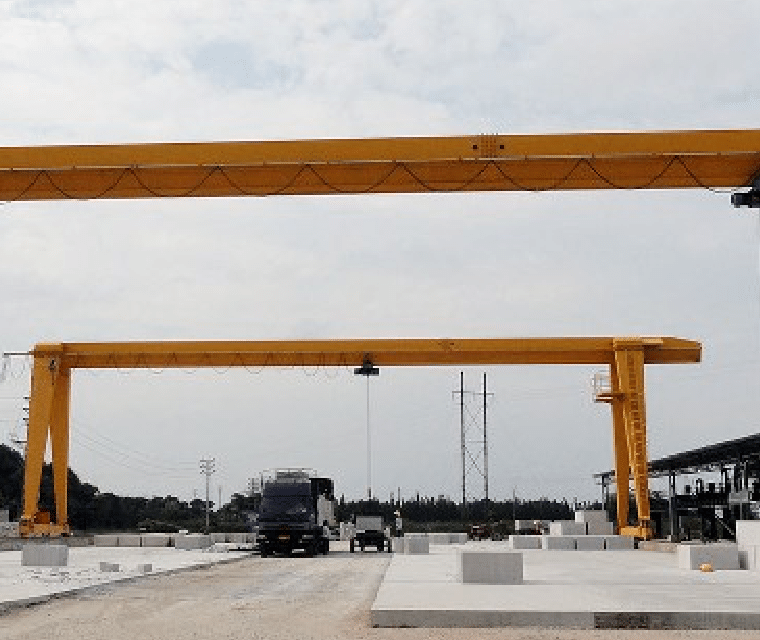In a factory setting, Electrical Chain Hoists are a must-have. Ideal for providing vertical lifts, electric chain hoists are pretty straight forward and simple to operate. This may cause them a nice-looking choice for companies.

However, what is not too easy could be the task of deciding on the right hoist to meet your needs. The marketplace is flooded having a large numbers of products, most of which are subpar offerings. Effortlessly manufacturers claiming the most notable spot, it could become difficult to settle on the most appropriate one.
This is why, to ensure that you do not go awry, we've gone ahead and compiled this complete guide to choosing electric chain hoists for your use. When you have the guide below, you'll have little difficulty understanding which product you need to purchase.
But let's start from the outset and make things right about what an electric powered Chain Hoist is.
Precisely what is an Electric Chain Hoist?
Quite simply, a power chain hoist is a device that's employed for vertically lifting and lowering any materials. The hoist contains an electric motor using a brake, Gearbox, Load Chain wheel and a controller, that are utilized to control the motions in the system. The lifting element used may be the Alloy Steel Chain.
These types of hoists are perfect in factories and machine shops, which require fast lifting and loading items.
A few when scouting for Electric Chain Hoists
Selecting the best chain hoist is probably the essential prerequisites for the safe and efficient workshop environment. Listed here are some of the important aspects that really must be taken into account when scouting for the best product.
The body weight with the load: This can be the first and a lot essential aspect you will want to consider in choosing electric chain hoists. The load that you'll be lifting determine the hoist you need to buy. As a general rule of thumb, for less than ten a great deal of lifting capacity, a chain hoist is preferred. However, for lifting greater weights, an electric wire hoist works. But this doesn't hold with high lifting height. So, depending on your industry requirements and needs, a choice of hoists will change.
Application Requirement: Once you have determined the load type, you have to figure out the application to which you will end up putting the hoist. Ask yourself this: Will you use it for product assembly? If that's so, then extreme precision is a prerequisite. Also essential is to know whether you're using any devices under the hook. Or what exactly are your duty cycles?
Lifting Speed: Another the answer to consider is the lifting speed, which should be carefully calibrated for your proper loading and unloading with the materials being lifted.
The job Environment: Perhaps more important than lift speed may be the environment where your hoist is going to be used. Factory environments may be abrasive for machinery, and it's really important to understand the impact that this workplace will have in your equipment. For instance, in the event the hoist is used in extremely high-temperature environments, this may cause gearbox leakage and related hoist malfunctions. Similarly, shallow temperatures could cause cracks to formulate or internal components to freeze. Setting where there are extreme temperature swings may also be detrimental on the operation of the hoist. Frequent temperature changes can result in electrical short circuits and associated equipment malfunction.
The job Cycle: What this means is time in which your hoist will probably be used. The amount of hours that this hoist will operate at a stretch may affect the longevity of the machine. The duration of the obligation cycle is vital as electrical hoists must dissipate heat from your motors. What this means is they ought to be given sufficient downtime to chill and recover. Otherwise, you could possibly you should be inviting equipment malfunctions.
The peak In the Lift: The height that you'll want to lift the load also plays an essential part within the range of the hoist. Usually, electric chain hoists have a very container in which the excess chain is spooled. Naturally, the greater the height, the more time the chain, which means a more substantial chain container. If not designed properly, a too-large container could possibly behave as a blockage on the load being lifted. A power Chain hoist is a preferred decision for higher lifting height, e.g. windmill hoist for turbine maintenance.
The ability Source: The type of hoist you're looking for may also determine the sort of power source you need to use. For low-duty cycle applications, a single-phase hoist will do. If, however, you need extremely high-duty cycles, then it's best to buy a three-phase hoist. This can make certain you have adequate power for the machine's operation.
Warranty: In terms of machines go, an electric hoist is probably the ones that undergo the standard wear and tear. Hence, to prevent repair costs, you should get a product that has attractive warranty features. Make certain that the hoist warranty covers all essential parts and labour. Usually, labour is more costly than parts, therefore it is best if the warranty is sold with both included.
Safety measures: At the end of the afternoon, a power hoist is really a machine. Plus any setting where electrical devices are being used, accidents may appear. This is why, when choosing the hoist, make sure it has all essential safety features, including load limiters. Also essential are self-adjusting brakes and thermal overload protection.
For more information about Gantry Cranes check this web site
